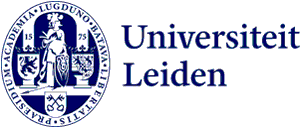
Innovative research offers new insight into ancient infant feeding practices
New sampling and analytical strategies give archaeologists a better understanding of the nutrition and survival of ancient populations. Publication in PLOS One.
New clues on breastfeeding in the past
A new study published in the peer-reviewed, open access journal PLOS One, explores the potential of combining different isotope systems from a range of tissues to improve resolution when reconstructing breastfeeding and weaning practices in archaeology. It provides new clues to understand the potential implications of breastfeeding and weaning practices on infant and childhood mortality.
New approach increases understanding of ancient cultures
Infant feeding practices play an important role in cognitive, physiological, and social development, making a profound impact on a community’s nutrition and survival.
In the past, isotope analysis of human skeletal remains has been widely applied to studies of ancient breastfeeding and weaning practices. Traditionally, these have focused on carbon and nitrogen isotopes in collagen of tooth roots and bones, or carbon and oxygen isotopes in dental enamel. These approaches are limited as they focus solely on breastmilk consumption and the introduction of weaning foods. When applied separately, these approaches have limitations to detect the timing of weaning and the type of resources used during the weaning process.
While studying the burials of Bacuranao I, a prehistoric Indigenous population from Mayabeque, Cuba, the research team developed and applied a novel approach, that combines different isotope systems and tissues types, providing a much more detailed and precise reconstruction of ancient infant feeding practices such as exclusive breastfeeding, the introduction of weaning foods, and the timing of the overall weaning process.

Novel combinations
“This research confirmed the ability of multi-proxy approaches, such as combining different isotope systems and tissues, to reconstruct breastfeeding and weaning practices in archaeology with improved resolution”, said Yadira Chinique de Armas. “We also present novel stable isotope data derived from deciduous teeth enamel which demonstrates that changes in diet can be detected in teeth formed during early infancy”.
Jason Laffoon also notes that “this study is also a good example of the fact that new insights do not always depend on the development of totally new analytical tools but can also be obtained by novel combinations of existing methods and strategies.”
Read the article on the website of PLOS One.
Collaboration
Yadira Chinique de Armas is the lead author on this study, co-authored with Anna-Maria Mavridou (Leiden University), Jorge Garcell Domínguez (Consejo Nacional de Patrimonio Cultural), Kaitlyn Hanson (University of Winnipeg, BSc, 2021), and senior author Jason Laffoon (Leiden University).
This research was made possible thanks to a fruitful collaboration between researchers from the Cuban Heritage Comision, Leiden University and the University of Winnipeg. Funding to complete the research were provided by the Insight Development Grant (Social Sciences and Humanities Council of Canada) lead by Dr. Yadira Chinique de Armas.
